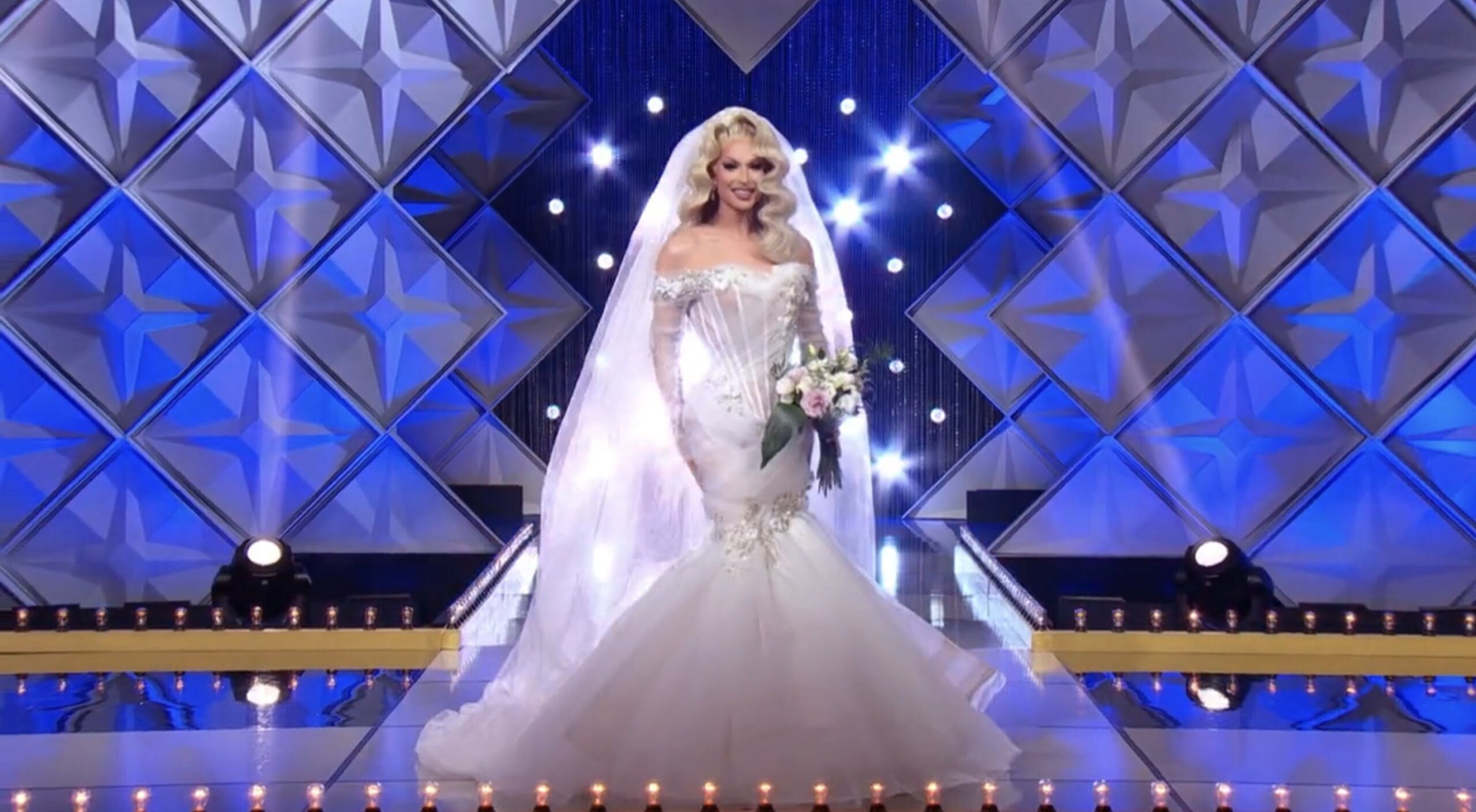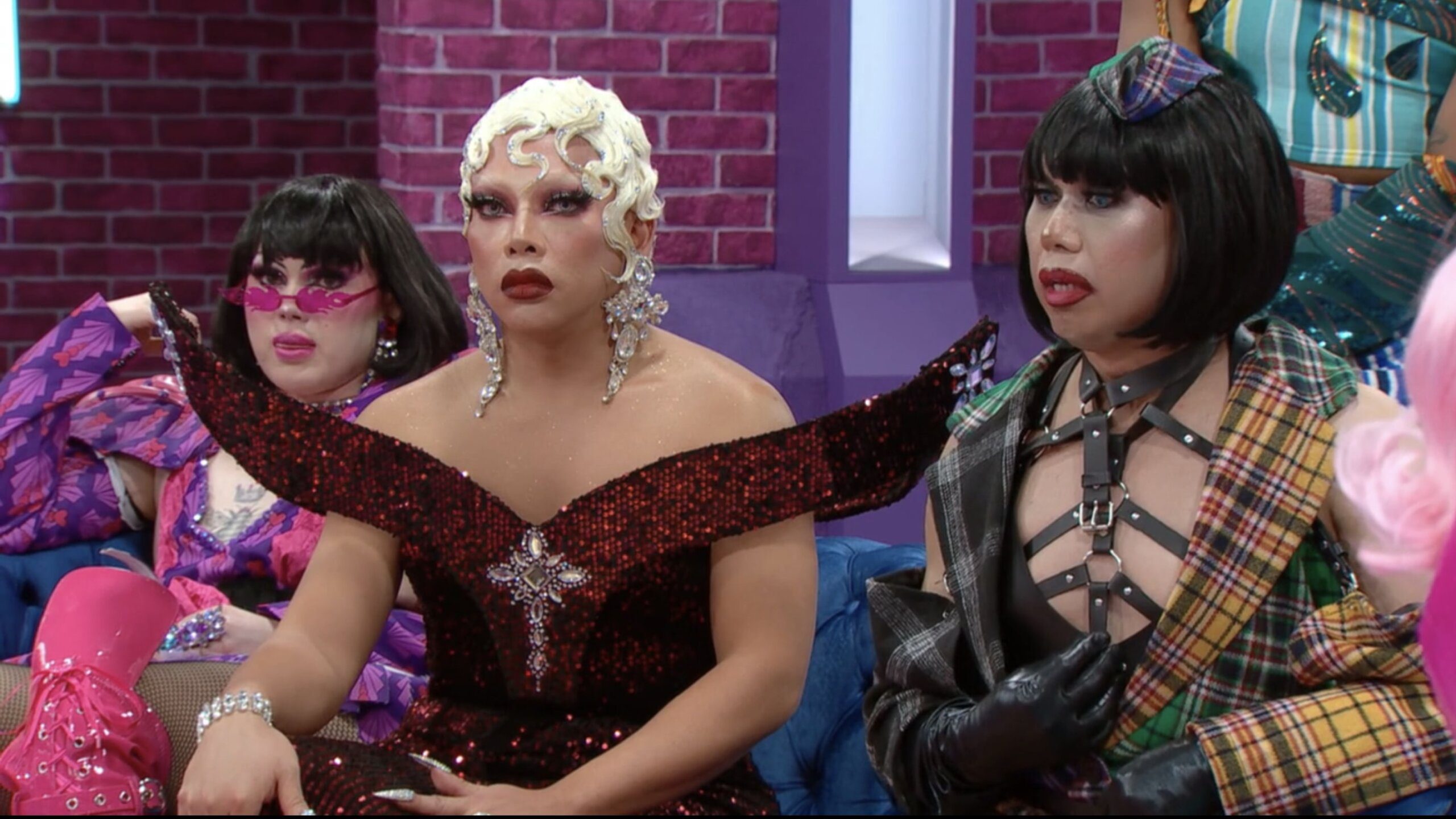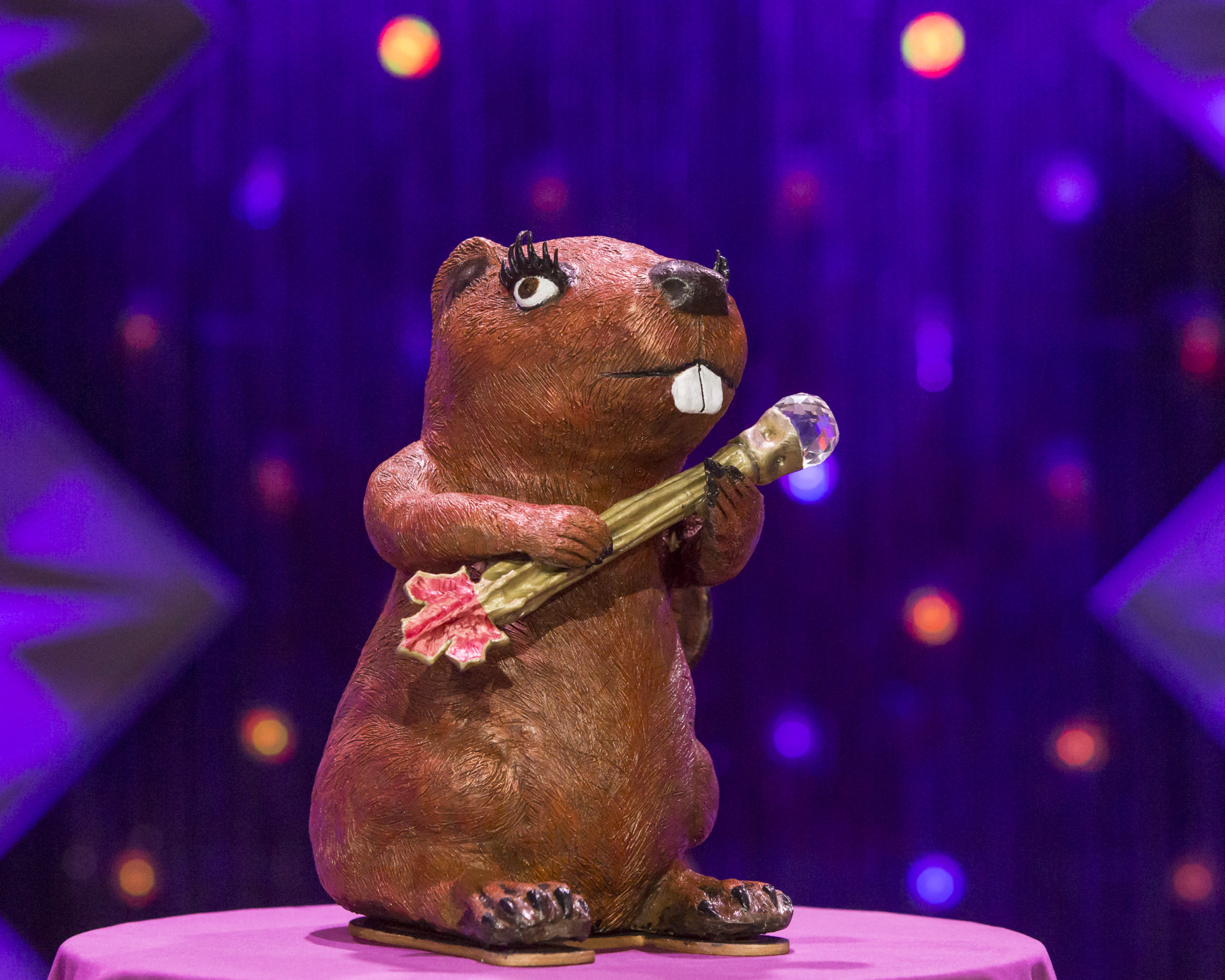When Trevor Boris, showrunner and executive producer of Canada’s Drag Race, joined the show ahead of its second season, he was working with a largely blank canvas. Season 1 of the Canadian RuPaul’s Drag Race spinoff had largely been a success, thanks in large part to its wildly popular cast. However, the judging panel had come under significant fire by the fans, leading one judge to leave not just the show, but Twitter as well. One of the others also had to exit because of “COVID-related challenges.”
Judge and co-host Brooke Lynn Hytes remained, but otherwise, the slate was effectively clean. Boris, a comedian who got into reality TV production and had at that point worked on three separate countries’ versions of Big Brother, had to work with the rest of the team to build Canada’s Drag Race into something new.
Three seasons later, the work done then and since has paid off in a big way. Canada’s Drag Race concludes its widely celebrated fourth season this week, in which either Aurora Matrix, Denim, Nearah Nuff or Venus will become Canada’s fourth Next Drag Superstar. Ahead of the finale, Boris talked to Xtra about the show, the Golden Beaver (which, to paraphrase Bob The Drag Queen, is certainly brown) and how his Big Brother experience influenced the game theory and structure of Canada’s Drag Race.
This interview has been edited and condensed for clarity.
The first time I can recall hearing your name was when I became obsessed with Big Brother UK in Season 19. That season had introduced a competition twist that resembled the Power of Veto competitions on North American Big Brother, and I read that you had come on from Big Brother Canada. Can you tell me how you got into reality TV production with Big Brother?
Trevor Boris (T.B.): I loved my time on Big Brother. I got to do, I think, 13 seasons in three countries. I really, really loved that UK experience. It was such a boot camp; they put a show together every single day.… It was just the best, but it was so hard. So hard putting a show together every single day, as you can imagine, but so, so fun. I was a part of the Celebrity edition right after, which had Kirstie Alley.… As a senior producer, I was one of the voices of Big Brother, so I would tell them to go to the diary room, I’d do diary-room interviews. A real highlight for me was, I was walking them through nominations, and Kirstie Alley said, “Oh, that American, he sounds so mean.” I was like, first of all, I’m Canadian!
My background really is in comedy. I was in stand-up; I did that for 15 years. I did a show in Canada that I started producing. And that was really my way into producing—getting into Big Brother was kind of a fluke, in a way. I was working with that company, I was a huge fan of Big Brother, so I was just excited to be a part of it in some way. I was a challenge producer at the start.
I grew to be an EP, and was ultimately in charge of all challenges and twists. It’s similar-ish to Drag Race, in that there’s a format, there were challenges, things like that. But for me, on Big Brother Canada … our first season, Big Brother was in Season 14 or something like that. So there is that thing of, okay, if we’re going to do this, how do we stand apart? We don’t want to be an exact copy, because then what’s the point? … I did things like the first-ever Triple Eviction, and the Invisible HOH and Backwards Week. All these kind of wild things that were still very true to the format, I’d say, but outside the box.
How does that experience translate to your work on Canada’s Drag Race now?
T.B.: I would say it’s a similar approach on Drag Race. I love the show so much, and I love the format so much. I’m so grateful to World of Wonder, which created this. It’s amazing how much it has grown, to where it is today.… It’s that thing of, and we try to do this in big ways and little ways … where do we do things differently?
When you came into Canada’s Drag Race, it was Season 2. Season 1 had a very popular cast, had excited people in a lot of ways—but the show had also come under scrutiny for the judging. There was a big reboot of the panel, and some other things changed as well regarding production. What were your top priorities coming into Season 2 as showrunner?
T.B.: You know, I’m loving the reaction to [Season 4] … I think it’s kind of easy to forget that we’re still in our early days. We’re at Season 4; it’s easy to compare when you look at the U.S. in Season 16. I think the first couple years, you’re still figuring it out. When I came in, it really was: okay, it’s Season 2, my first season. You still wanna stay pretty true to the format, you don’t wanna do crazy twists. Even if other countries are doing that. We’re still in our Season 2; we’re still finding our footing.
So I wasn’t overthinking. Coming into Season 2, I really just wanted to do a Girlicious lip sync. [laughs] My main approach to Season 2 was, how do we be our own and Canadian, but maybe not super Canadiana? I’m not as big a fan of being on the nose about things like the maple syrup and some of the obvious jokes. We don’t really have that in our show.… I think you do it with the cast, the judges, the lip syncs, the guest judges, all that.

Brooke Lynn Hytes may have been the bridesmaid in her season of RuPaul’s Drag Race, but she has recast herself as the bride for one episode this season. Credit: Courtesy Bell Media
When it comes to the judges in particular—Brooke Lynn Hytes, Brad Goreski and Traci Melchor—they have clearly evolved a lot over the years in terms of their critiques. How much of that do you think has come from the judges themselves, and how much is about how production has changed?
T.B.: What I am so grateful about our judges’ panel is that they really are family. They love each other, you can see that in their posts.… They have so much fun—sometimes too much fun. We have jobs to do! But I’m really grateful that they really, really love each other. They also really complement each other as well. I think they all have very unique perspectives. Obviously, Brooke Lynn is really that kind of motherly [vibe], having done Drag Race, she can feel for the queens and for what they’re going through. Brad has such a fashion eye, a celebrity point of view … and Traci is a legend here, being on TV for like 20-plus years. She’s done a billion red carpets and has interviewed everyone on the planet. She really is a consummate professional.
To me, they’re all there to make the queens better through their journeys. It’s a competition, and you do need to have tops and bottoms. That really is the format. I always say you need to justify where you put them. If they’re gonna win, or if they’re gonna be in the lip sync, you need to explain.… Everyone has their own opinion, and I think that’s what’s fun about the show. Everyone gets to have an opinion; Twitter [X] is full of them … and people don’t all agree with each other! With time, [the judges] have gotten better. I think it just takes a little bit of time to figure that out.
In terms of changes to make Canada’s Drag Race just a bit different from the flagship series, we have to talk about this season’s lip sync smackdown. It had such a simple format change: advance the winners instead of the losers. And it made for fantastic television! What inspired that change?
T.B.: One thing about Canadian queens, I think, is that they’re really strong performers. So it came from a place of wanting to do a lip sync episode … [it] was a big swing for us, to do something like that. Making it double elimination was also something that, right from the start, we really wanted to do. That kind of stuff, I really like. And that comes from my Big Brother [experience], I really like analyzing the game part of it. This happens way before casting happens, so we just lucked out that we have a cast that was such great lip-syncers.
We wanted to see the best lip-syncers keep going, so it made sense. This should be the maxi-challenge, which means there should be a winner.

Melinda Verga defends her staying in the competition, as Kiki Coe contemplates whether she made the right decision to give her the Golden Beaver Credit: Courtesy Bell Media
The Golden Beaver has been received really well—I think it’s the best Drag Race twist ever—and it’s something that fans have talked about wanting as a format for some time. Tell me everything about how it came about, including why it’s brown instead of gold.
T.B.: Season 4, we did this cold open that was like, this is the new era. And that was how we approached [the show]. This felt like the right time to mix it up a little.… What can we do that is something that will give us a lot of good without changing the game too much? This was my baby, and what I really love about it is that it’s positive. We’re giving the power from the judges to the queens, and it gives them something to talk about in Untucked.… It gives them some agency; now, there’s some power in their hands, and they’ll do with it what they will. They’re not sending people home. They’re just saving someone. And they have a really unique perspective that the judges don’t have. They’re the ones in the room with the queens the whole time. They see everything. It felt like the right power to give the queens, and to give it a bit of a social component.
On it being brown: the Golden Bachelor isn’t gold, is he? [laughs] To me, the power is gold! And the sceptre is gold.
Out of curiosity, why the decision to stop the Golden Beaver at Final 6?
T.B.: This is not an All Stars season, and we knew putting in a twist that was affecting the game was a big move. I didn’t want it to overstay its welcome.… For them to have survived a double elimination lip sync slay-off, with the Golden Beaver it felt like, all right, let’s just put it back.
This season, Melinda Verga has broken out in a big way. Obviously, the whole cast is special, but did you have a moment in this season when you realized you had someone incredible on your hands with Melinda?
T.B.: A lot of this group, we felt right from the jump. Kiki [Coe] was this legendary designer. Venus, big personality. Denim’s an icon. The Girlfriend Experience, we knew people were going to be obsessed. To me, truly, we’re really happy with the whole cast. And very different from each other! It’s a really unique group, and unique to other seasons. It feels very fresh to us.
Obviously, I don’t think any of us saw this coming for Melinda after the first few episodes. But that’s the beauty of the show, and how you know it’s real. People want to think it’s all so produced. You couldn’t have scripted this! Even just the moment in Episode 4 when Kiki saved Melinda—she saved her because she didn’t want her to go out like that.… Great moment, and that happened truly organically. And if we had written that in the next week, Melinda will win Snatch Game and save Kiki, [you would think] it would be too wild, too crazy. And that just is the beauty of reality TV. Sometimes it works that way, and sometimes it doesn’t.
The finale of Canada’s Drag Race will be available to stream on Thursday, Jan. 11 at 9 p.m. EST on WOW Presents Plus in the U.S. and on Crave in Canada. You can subscribe to our drag newsletter, Wig!, for exclusive Drag Race content delivered straight to your inbox every Tuesday afternoon.

 Why you can trust Xtra
Why you can trust Xtra


